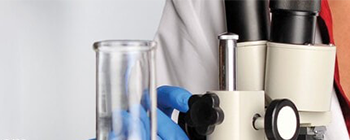Learn More
CD38 Monoclonal Antibody (90), PE-Cyanine5, eBioscience™, Invitrogen™
Rat Monoclonal Antibody
Supplier: Thermo Fisher Scientific 15038182
Description
Description: The 90 monoclonal antibody reacts with the mouse CD38 molecule, an ∽42 kDa type II transmembrane protein. CD38 is expressed at increasingly higher levels on B cells at each stage of B-cell differentiation, and is then down-regulated on germinal center B cells and mature plasma cells. Its expression is reported on a subpopulation of thymocytes, mature T cells, and NK cells. Crosslinking of CD38 on the surface of mature, resting B cells induces B-cell proliferation, which is enhanced by co-signals such as IL-4 and LPS. CD38, a counter-receptor for CD31, is an ectoenzyme with cyclase and hydrolase enzymatic activity and is speculated to play a role in lymphocyte activation and differentiation. Applications Reported: The 90 antibody has been reported for use in flow cytometric analysis. Applications Tested: The 90 antibody has been tested by flow cytometric analysis of mouse splenocytes. This can be used at less than or equal to 0.06 µg per test. A test is defined as the amount (µg) of antibody that will stain a cell sample in a final volume of 100 µL. Cell number should be determined empirically but can range from 10^5 to 10^8 cells/test. It is recommended that the antibody be carefully titrated for optimal performance in the assay of interest. Light sensitivity: This tandem dye is sensitive photo-induced oxidation. Please protect this vial and stained samples from light.
Fixation: Samples can be stored in IC Fixation Buffer (cat. 00-8222) (100 µL cell sample + 100 µL IC Fixation Buffer) or 1-step Fix/Lyse Solution (cat. 00-5333) for up to 3 days in the dark at 4°C with minimal impact on brightness and FRET efficiency/compensation. Some generalizations regarding fluorophore performance after fixation can be made, but clone specific performance should be determined empirically. Excitation: 488-561 nm; Emission: 667 nm; Laser: Blue Laser, Green Laser, Yellow-Green Laser. Filtration: 0.2 μm post-manufacturing filtered. CD38 (NAD+ glycohydrolase) is a type II transmembrane glycoprotein able to induce activation, proliferation and differentiation of mature lymphocytes and mediate apoptosis of myeloid and lymphoid progenitor cells. CD38 functions as a multi-catalytic ectoenzyme serving as ADP-ribosyl cyclase, cyclic ADP-ribose hydrolase and possibly NAD+ glycohydrolase or as a cell surface receptor. Antibodies to CD38 are useful in subtyping of lymphomas and leukemias, detection of plasma cells (i.e. identification of myelomas), and as a marker for activated B and T cells. CD38 participates in cell adhesion, signal transduction and calcium signaling. Further, CD38 is expressed at high levels in the pancreas, liver, kidney, maligt lymphoma and neuroblastoma. Diseases associated with CD38 dysfunction include chronic lymphocytic leukemia and Richterâs Syndrome.Specifications
| CD38 | |
| Monoclonal | |
| 0.2 mg/mL | |
| PBS with 0.1% gelatin and 0.09% sodium azide; pH 7.2 | |
| P56528 | |
| Cd38 | |
| Affinity chromatography | |
| RUO | |
| 12494 | |
| 4° C, store in dark, DO NOT FREEZE! | |
| Liquid |
| Flow Cytometry | |
| 90 | |
| PE-Cyanine5 | |
| Cd38 | |
| T10, ADP-ribosyl cyclase 1, ADP-ribosyl cyclase/cyclic ADP-ribose hydrolase, CD38 antigen p45, NAD+ nucleosidase, cADPr hydrolase 1, cyclic ADP-ribose hydrolase 2 | |
| Rat | |
| 100 μg | |
| Primary | |
| Mouse | |
| Antibody | |
| IgG2a κ |
For Research Use Only.



